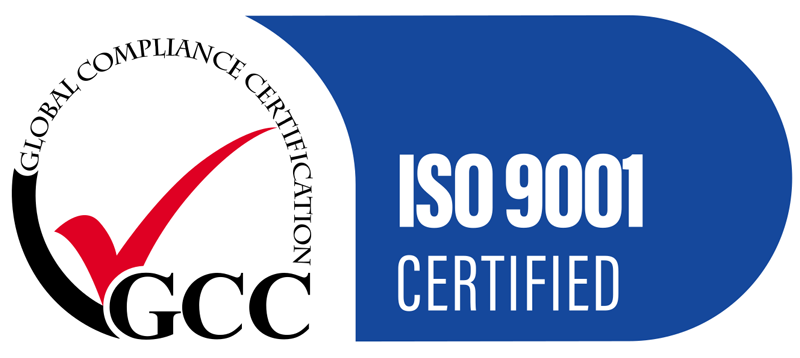The hardness of steel is important to many processes. Steel hardness describes the properties of steel that enable it to resist plastic deformation, indentation, penetration, and scratching. In engineering, steel hardness is important because the inherent resistance of the surface to withstand friction or erosion by oil, steam, and water, typically increases with the relative hardness of steel.
The higher the steel hardness, the more resistant the surface will be. This creates difficulties in surface operations, such as cutting and machining. There is no one quality that influences the hardness of steel, or that can be termed ‘hardness’. There are various empirical steel hardness tests. The most important and popular of these measures are Brinell, Rockwell, and Vickers.
The hardness tests do not measure hardness in units, but as an index. Because each of the steel hardness tests are so common, the index is given as a number followed by a code to indicate the test method.
Which steel hardness test to use
Traditionally, Brinell is used for softened steels and Vickers is used more widely. These tests measure the diameter of the indentation left on the surface of the metal. The Rockwell method assesses steel hardness by measuring the depth of penetration of an indentation.
Brinell steel hardness test
The Brinell test was the first widely used standardised steel hardness test. It requires a large test piece and leaves a large indentation; therefore, it is limited in its usefulness. The acronym BHN is used to show a Brinell Hardness Number. The term ‘Brinelling’ has come to mean the permanent indentation of any hard surface. The test involves a large, heavy ball, which is pushed against steel at a predetermined level of force. The depth and diameter of the mark are measured and indexed to provide a BHN.
Rockwell steel hardness test
The Rockwell scale is also based on the diameter of an indentation. A Rockwell hardness tester is much lighter and more mobile. It determines steel hardness by putting pressure on steel. It was developed in the US to determine the change in hardness between steel and heat treated steel.
Vickers steel hardness test
Developed in the UK as an alternative to the Brinell test, the Vickers hardness test can test all materials, whether hard or soft. It was the widest scale of indices, and is easier to use than the other steel hardness tests. The Vickers hardness test provides a Vickers Pyramid Number (HV) or a Diamond Pyramid Hardness (DPH) number. This is because the indentor is a pyramid or cone shape.
Steel hardness conversion
Because there are so many different types of steel hardness tests, a conversion table, such as the one below, allows us to take one measure and estimate the relative hardness on another measurement scale. Please bear in mind that you need to denote that a measurement is converted, as each of the scales offer different measurements, which means that conversions remain in estimate form only. Download the ShapeCUT Steel Hardness Conversion Table as a handy fact sheet.
For all your steel cutting needs, call ShapeCUT. We have been working with steel for over 20 years, and our modern machines enable us to provide high-quality same-day service.
Hardness Conversion Table
|
Tensile |
Brinell Hardness (BHN) |
Vickers Hardness (HV) |
Rockwell Hardness (HRB) |
Rockwell Hardness (HRC) |
|---|---|---|---|---|
| 285 | 86 | 90 | ||
| 320 | 95 | 100 | 56.2 | |
| 350 | 105 | 110 | 62.3 | |
| 385 | 114 | 120 | 66.7 | |
| 415 | 124 | 130 | 71.2 | |
| 450 | 133 | 140 | 75.0 | |
| 480 | 143 | 150 | 78.7 | |
| 510 | 152 | 160 | 81.7 | |
| 545 | 162 | 170 | 85.0 | |
| 575 | 171 | 180 | 87.1 | |
| 610 | 181 | 190 | 89.5 | |
| 640 | 190 | 200 | 91.5 | |
| 675 | 199 | 210 | 93.5 | |
| 705 | 209 | 220 | 95.0 | |
| 740 | 219 | 230 | 96.7 | |
| 770 | 228 | 240 | 98.1 | |
| 800 | 238 | 250 | 99.5 | |
| 820 | 242 | 255 | 23.1 | |
| 850 | 252 | 265 | 24.8 | |
| 880 | 261 | 275 | 26.4 | |
| 900 | 266 | 280 | 27.1 | |
| 930 | 276 | 290 | 28.5 | |
| 950 | 280 | 295 | 29.2 | |
| 995 | 295 | 310 | 31.0 | |
| 1030 | 304 | 320 | 32.2 | |
| 1060 | 314 | 330 | 33.3 | |
| 1095 | 323 | 340 | 34.4 | |
| 1125 | 333 | 350 | 35.5 | |
| 1155 | 342 | 360 | 36.6 | |
| 1190 | 352 | 370 | 37.7 | |
| 1220 | 361 | 380 | 38.8 | |
| 1255 | 371 | 390 | 39.8 | |
| 1290 | 380 | 400 | 40.8 | |
| 1320 | 390 | 410 | 41.8 | |
| 1350 | 399 | 420 | 42.7 | |
| 1385 | 409 | 430 | 43.6 | |
| 1420 | 418 | 440 | 44.5 | |
| 1455 | 428 | 450 | 45.3 | |
| 1485 | 437 | 460 | 46.1 | |
| 1520 | 447 | 470 | 46.9 | |
| 1555 | 456 | 480 | 47.7 | |
| 1595 | 466 | 490 | 48.4 | |
| 1630 | 475 | 500 | 49.1 | |
| 1665 | 485 | 510 | 49.8 | |
| 1700 | 494 | 520 | 50.5 | |
| 1740 | 504 | 530 | 51.1 | |
| 1775 | 513 | 540 | 51.7 | |
| 1810 | 523 | 550 | 52.3 | |
| 1845 | 532 | 560 | 53.0 | |
| 1880 | 542 | 570 | 53.6 | |
| 1920 | 551 | 580 | 54.1 | |
| 1955 | 561 | 590 | 54.7 | |
| 1995 | 570 | 600 | 55.2 | |
| 2030 | 580 | 610 | 55.7 | |
| 2070 | 589 | 620 | 56.3 | |
| 2105 | 599 | 630 | 56.8 | |
| 2145 | 608 | 640 | 57.3 | |
| 2180 | 618 | 650 |
57.8 |
DISCLAIMER: This specification is for information purposes only. ShapeCUT takes no responsibility for the suitability of the steels referred to in this specification without prior notification. ShapeCUT takes no responsibility for any errors or omissions, or for any consequences resulting from its use.
Contact Us To Find Out More
We ensure a fast, exact and economical steel solution for our clients. Call our team today to discuss your steel cutting and metal processing requirements.
Get Our Newsletter
Contact details
121 Mica Street, Carole Park,
QLD, 4300, AUSTRALIA
Freecall: 1800 SHAPECUT (1800 742 732)
Telephone: (07) 3271 5600
Facsimile: (07) 3271 5454
Email: sales@shapecut.com.au
Accredited Profile Cutting

Profile Cutting
Metal Processing Services
©2025 ShapeCut | Website design Brisbane by iFactory | Privacy Policy | Search | Sitemap



